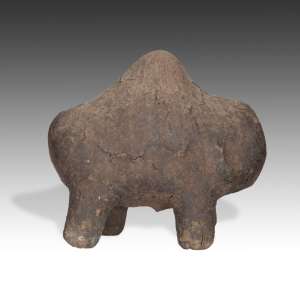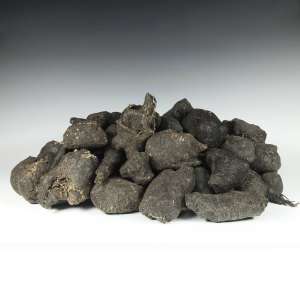Bamana Boli African Fetish
 |
|
 |
|
Boli fall into a category of art that can be called fetishes. A fetish is formally described as an inanimate object worshipped for its magical powers or because it is inhabited by a spirit. In either event, the fetish is believed to be capable of effecting profound changes in the physical world inhabited by the believers. A fetish is more than an amulet, talisman, or charm. It is, in essence, a magical instrument capable of forging changes in the physical world upon activation. In many cultures, once activated, fetishes can operate independently of those who govern their creation and use.
Among the many and varied types of fetishes found throughout the world, one of the most famous is the Boli, also spelled Boliw. Even today, in a world filled with high sped communications, the internet, and educated analysis of objects and cultural phenomenon, there is little specific information about how fetishes work other than to say, “They work magically.” One thing is certain: to believers, they do work. There is general agreement among scholars that getting them to work requires “activation” of some sort, not just care in their creation; however, the ingredients used in their creation will directly affect the efficacy of the fetish.
 |
|
In the case of Boli, a wide range of ingredients is used to make the finished object potent. These may include animal bones, vegetable matter, honey, pieces of metal and wood, valuable ingredients such as gold dust or hard stones, ritual herbs and roots, horns, shells, glass and mirrors, and all sorts of other animal parts such as feathers and quills, just to name a few. They are mixed with earth in a complex array of power recipes called daliluw. Whatever the ingredients may be they are essential to the potency of the boli, which are also considered some of the most powerful objects found in all African art.
 |
|
Just as important in the creation of the Boli is its activation, which can only be accomplished by initiates trained in matters of this sort. The knowledge, use and governance of the Boli is considered a sacred task and only assigned to individuals who it is believed possess special powers themselves, just as the Boli itself contains special powers. Activation of the Boli is essential to its use. This is done through sacrifice and offerings. Ultimately, the Boli becomes impregnated with sacrificial materials such as blood, feathers, mashed kola nuts, alcoholic beverages, millet, and a wide range of other materials. The final form of the Boli is directly affected by these sacrifices, which build up an encrusted surface over time. Although many Boli resemble abstract hippopotami, it should be noted that some may appear just as lumps of earth in the shapes of balls or mounds. In other words, there are many different forms of Boli. For example, in PRIMITIVE’s collection of Boli is a heavily encrusted “Medicine Pot” containing 27 individual Boli, many visibly impregnated with iron rods, which some scholars believe was an aid in their activation.
Although Boli are considered magical, secret objects by the Bamana people, it is somewhat ironic that they are now becoming appreciated by western audiences as a distinct form of modern abstract art. Although many Boli appear to depict animals, it is sometimes impossible to suggest what they illustrate. The very nature of this abstract quality fits perfectly with the Bamana principle that very powerful things are opaque to human understanding, and only the initiated are capable of this understanding.